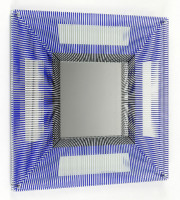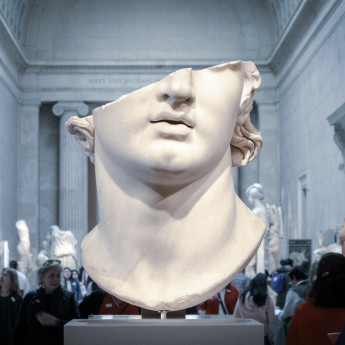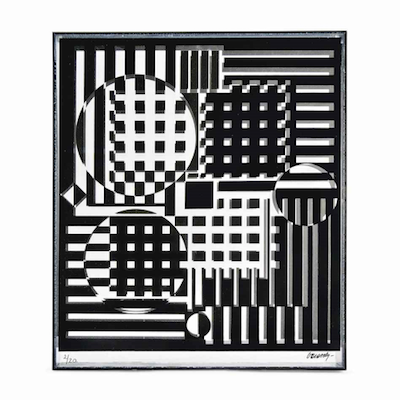
Details
Artist
Styles
wood, steel and serigraph // Antonio Asis’s Vibration Grand Cercle (2010) is a mixed media sculpture that brilliantly exemplifies the artist’s exploration of optical and kinetic art. This limited edition piece, crafted from wood, steel, and serigraph, creates an illusion of movement and depth through a meticulously arranged grid of perforations. The dark circular patterns, emerging and receding across the square form, appear to pulse and vibrate as the viewer shifts position, engaging the eyes in an almost hypnotic dance. Asis’s work is known for its ability to manipulate perception, and Vibration Grand Cercle invites viewers into an immersive experience where light, shadow, and form converge to challenge visual stability.
vibration grand cercle, 2010
form
Medium
Size
52 x 52 X 13 cm
- Inches
- Centimeters
Edition
Price
- USD
- EUR
- GBP
Details
Artist
Styles
wood, steel and serigraph // Antonio Asis’s Vibration Grand Cercle (2010) is a mixed media sculpture that brilliantly exemplifies the artist’s exploration of optical and kinetic art. This limited edition piece, crafted from wood, steel, and serigraph, creates an illusion of movement and depth through a meticulously arranged grid of perforations. The dark circular patterns, emerging and receding across the square form, appear to pulse and vibrate as the viewer shifts position, engaging the eyes in an almost hypnotic dance. Asis’s work is known for its ability to manipulate perception, and Vibration Grand Cercle invites viewers into an immersive experience where light, shadow, and form converge to challenge visual stability.
- Recently Added
- Price (low-high )
- Price (high-low )
- Year (low-high )
- Year (high-low )
Antonio Asis
Vibration Bandes Noir, Bleu Et Turquoise, 2010
Sculpture / Object
Mixed Media
EUR 3,000
What is Op Art?
Op Art is a visual art style that uses optical illusions to create the impression of movement, vibrating patterns, flashing, or hidden images. The works are typically abstract, with many well-known pieces in black and white. The roots of Op Art can be traced back to earlier movements like Futurism, Constructivism, Dada, and Neo-Impressionism, particularly in their use of color effects and graphic design.
































